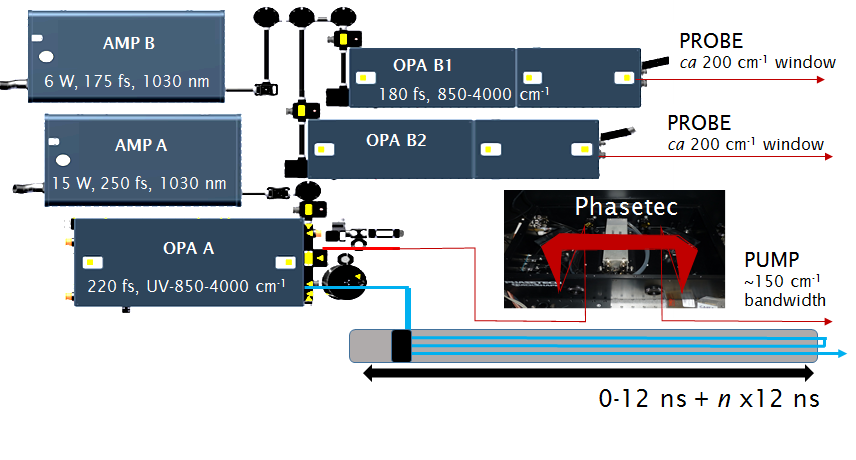The technology builds upon CLF expertise gained from the
Ultra programme. It brings together several investigator teams to deliver a wide front of biological science, encompassing protein folding, the physical basis of catalysis, signalling in enzymes and DNA damage.
The dynamics of biological processes cover a range of timescales, from the femtosecond to millisecond time domain. On femtosecond to picosecond timescales, for example, hydrogen bonding fluctuations and/or electron charge changes in a molecule begin to influence the atomic structure. These are followed by nanosecond to microsecond changes where chemical bonds are broken and solvation occurs, with large scale geometry changes such as protein unfolding and/or diffusion happening. The latter brings two reactants together and eventually, on millisecond timescales, products become fully established. LIFEtime is able to resolve all the individual steps.
The LIFEtime instrument
The compact laser layout for LIFEtime is essential to optimise delivery of the mid-IR laser beam wavelengths, which are affected by moisture in the air, to the sample. Two 100 kHz Pharos lasers and three optical parametric amplifiers (Light Conversion Systems) provide a UV (210 nm) to mid-IR (16,000 nm) pump beam and two independently tunable mid-IR (2,400-13,000 nm) probe beams. These and the associated spectrometers and 128 element detector arrays are configured for Time-Resolved Multiple Probe Spectroscopy (TRMPS). TRMPS then tracks reactions by time-resolved pump-probe-probe-probe….. IR across 10 decades in time from 300 fs to milliseconds for a single sample in a single experiment. The high repetition rate of the laser and an IR pulse shaper will acquire interferometric 2DIR spectra every few seconds.

